Material science visualizers
iRASPA is a GPU-accelated visualization package (with editing capabilities) aimed at material science. Examples of materials are metals, metal-oxides, ceramics, biomaterials, zeolites, clays, and metal-organic frameworks. iRASPA is available on macOS, Linux, and windows, and leverages the latest visualization technologies with high performance. iRASPA extensively utilizes GPU computing. For example, void-fractions and surface areas can be computed in a fraction of a second for small/medium structures and in a few seconds for very large unit cells. It can handle large structures (hundreds of thousands of atoms), including ambient occlusion, with high frame rates. Main features are
● Structure creation and editing.
● Creating high-quality pictures and movies.
● Ambient occlusion and high-dynamic range rendering.
● Collage of structures.
● (Transparent) adsorption surfaces,
● Text-annotation.
● Cell replicas and supercells.
● Symmetry operations like space group and primitive cell detection.
● Screening of structures using user-defined predicates.
● GPU-computation of void-fraction and surface areas in a matter of seconds.
● Structure creation and editing.
● Creating high-quality pictures and movies.
● Ambient occlusion and high-dynamic range rendering.
● Collage of structures.
● (Transparent) adsorption surfaces,
● Text-annotation.
● Cell replicas and supercells.
● Symmetry operations like space group and primitive cell detection.
● Screening of structures using user-defined predicates.
● GPU-computation of void-fraction and surface areas in a matter of seconds.
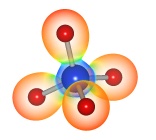
VESTA is a 3D visualization program for structural models, volumetric data such as electron/nuclear densities, and crystal morphologies. Some of the novel features of VESTA are listed below.
● Deal with multiple structural models, volumetric data, and crystal morphologies in the same window.
● Support multiple tabs corresponding to files.
● Support multiple windows with more than two tabs in the same process.
● Deal with virtually unlimited number of objects such as atoms, bonds polyhedra, and polygons on isosurfaces (theoretical limit on 32bit operating system is 1,073,741,823)
● Support lattice transformation from conventional to non-conventional lattice by using matrix. The transformation matrix is also used to create superlattice and sublattice.
● Visualize interatomic distances and bond angles that are restrained in Rietveld analysis with RIETAN-FP.
● Transparent isosurfaces can be overlap with structural models. Isosurface can be colored on the basis of another physical quantity.
● Arithmetic operations among multiple volumetric data files. ● High quality smooth rendering of isosurfaces and sections.
● Export high-resolution graphic images exceeding Video card limitation.
● Deal with multiple structural models, volumetric data, and crystal morphologies in the same window.
● Support multiple tabs corresponding to files.
● Support multiple windows with more than two tabs in the same process.
● Deal with virtually unlimited number of objects such as atoms, bonds polyhedra, and polygons on isosurfaces (theoretical limit on 32bit operating system is 1,073,741,823)
● Support lattice transformation from conventional to non-conventional lattice by using matrix. The transformation matrix is also used to create superlattice and sublattice.
● Visualize interatomic distances and bond angles that are restrained in Rietveld analysis with RIETAN-FP.
● Transparent isosurfaces can be overlap with structural models. Isosurface can be colored on the basis of another physical quantity.
● Arithmetic operations among multiple volumetric data files. ● High quality smooth rendering of isosurfaces and sections.
● Export high-resolution graphic images exceeding Video card limitation.

Avogadro is an advanced molecule editor and visualizer designed for cross-platform use in computational chemistry, molecular modeling, bioinformatics, materials science, and related areas. It offers flexible high quality rendering and a powerful plugin architecture.
● Cross-Platform: Molecular builder/editor for Windows, Linux, and Mac OS X.
● Free, Open Source: Easy to install and all source code and documentation is available to modify or extend.
● International: Translations into Chinese, French, German, Italian, Russian, Spanish, and others, with more languages to come.
● Intuitive: Built to work easily for students and advanced researchers both.
● Fast: Supports multi-threaded rendering and computation.
● Extensible: Plugin architecture for developers, including rendering, interactive tools, commands, and Python scripts.
● Flexible: Features include Open Babel import of chemical files, input generation for multiple computational chemistry packages, crystallography, and biomolecules.
● Cross-Platform: Molecular builder/editor for Windows, Linux, and Mac OS X.
● Free, Open Source: Easy to install and all source code and documentation is available to modify or extend.
● International: Translations into Chinese, French, German, Italian, Russian, Spanish, and others, with more languages to come.
● Intuitive: Built to work easily for students and advanced researchers both.
● Fast: Supports multi-threaded rendering and computation.
● Extensible: Plugin architecture for developers, including rendering, interactive tools, commands, and Python scripts.
● Flexible: Features include Open Babel import of chemical files, input generation for multiple computational chemistry packages, crystallography, and biomolecules.
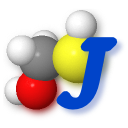
Jmol is a free, open source viewer of molecular structures useful for students, educators and researchers in chemistry, biochemistry and other fields dealing with molecular structure. It is cross-platform, running on Windows, Mac OS X, and Linux/Unix systems. The Jmol application is a standalone Java application that runs on the desktop.
The JSmol is an object that can be integrated into web pages. It does not require Java, since it runs using just the browser's HTML5 and JavaScript engines.
The JmolViewer is a development tool kit that can be integrated into other Java applications.
● High-performance 3D rendering with no hardware requirements.
● Many file formats are supported.
● Animations.
● Vibrations.
● Surfaces.
● Support for unit cell and symmetry operations.
● Schematic shapes for secondary structures in biomolecules.
● Exports to jpg, png, gif, ppm, pdf, POV-Ray, Gaussian, Maya, vrml, x3d, stl, idtf, web page.
● High-performance 3D rendering with no hardware requirements.
● Many file formats are supported.
● Animations.
● Vibrations.
● Surfaces.
● Support for unit cell and symmetry operations.
● Schematic shapes for secondary structures in biomolecules.
● Exports to jpg, png, gif, ppm, pdf, POV-Ray, Gaussian, Maya, vrml, x3d, stl, idtf, web page.
Bio-molecular Visualizers
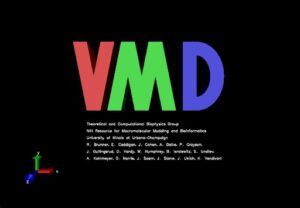
VMD is designed for modeling, visualization, and analysis of biological systems such as proteins, nucleic acids, lipid bilayer assemblies, etc. It may be used to view more general molecules, as VMD can read standard Protein Data Bank (PDB) files and display the contained structure. VMD provides a wide variety of methods for rendering and coloring a molecule: simple points and lines, CPK spheres and cylinders, licorice bonds, backbone tubes and ribbons, cartoon drawings, and others. VMD can be used to animate and analyze the trajectory of a molecular dynamics (MD) simulation. In particular, VMD can act as a graphical front end for an external MD program by displaying and animating a molecule undergoing simulation on a remote computer. Main features:
● General molecular visualization: At its heart, VMD is a general application for displaying molecules containing any number of atoms and is similar to other molecular visualization programs in its basic capabilities. VMD reads data files using an extensible plugin system, and supports Babel for conversion of other formats. User-defined atom selections can be displayed in any of the standard molecular representations. Displayed graphics can be exported to an image file, to a scene file usable by ray tracing programs, or to a geometry description file suitable for use with 3-D printers.
● Visualization of dynamic molecular data: VMD can load atomic coordinate trajectories from AMBER, Charmm, DLPOLY, Gromacs, MMTK, NAMD, X-PLOR, and many other simulation packages. The data can be used to animate the molecule or to plot the change in molecular properties such as angles, dihedrals, interatomic distances, or energies over time.
● Visualization of volumetric data: VMD can load, generate, and display, volumetric maps. Supported map formats include CryoEM maps, electrostatic potential maps, electron density maps, and many other map file formats.
● Interactive molecular dynamics simulations: VMD can be used as a graphical front-end to a live molecular dynamics program running on a remote supercomputer or high-performance workstation. VMD can interactively apply and visualize forces in an MD simulation as it runs.
● Molecular analysis commands: Many commands are provided for molecular analysis. These include commands to extract information on sets of atoms and molecules, vector and matrix routines for coordinate manipulation, and functions for computing values such as center of mass and radius of gyration.
● Tcl and Python scripting languages: VMD uses the freely available Python and Tcl scripting languages for processing text commands. These popular languages which contain variables, loops, subroutines, and much more. VMD also uses the Tk Toolkit - a simple user interface toolkit that interfaces with Tcl.
● Easy to extend: VMD is written in C and C++ and employs object-oriented design. VMD implements a plugin interface for extending its file format support and for general purpose extensions in functionality.
● Support for multimodal input and various display systems : A number of different visual display and control systems are supported in addition to the usual monitor, keyboard, and mouse. The VRPN library is used to get position and orientation information from a wide variety of spatial input devices, including magnetic trackers, haptic (force feedback) devices, Spaceballs, etc. VMD works with WireGL and Chromium on tiled display walls, and immersive VR environments via compiled-in CAVE and FreeVR support.
● General molecular visualization: At its heart, VMD is a general application for displaying molecules containing any number of atoms and is similar to other molecular visualization programs in its basic capabilities. VMD reads data files using an extensible plugin system, and supports Babel for conversion of other formats. User-defined atom selections can be displayed in any of the standard molecular representations. Displayed graphics can be exported to an image file, to a scene file usable by ray tracing programs, or to a geometry description file suitable for use with 3-D printers.
● Visualization of dynamic molecular data: VMD can load atomic coordinate trajectories from AMBER, Charmm, DLPOLY, Gromacs, MMTK, NAMD, X-PLOR, and many other simulation packages. The data can be used to animate the molecule or to plot the change in molecular properties such as angles, dihedrals, interatomic distances, or energies over time.
● Visualization of volumetric data: VMD can load, generate, and display, volumetric maps. Supported map formats include CryoEM maps, electrostatic potential maps, electron density maps, and many other map file formats.
● Interactive molecular dynamics simulations: VMD can be used as a graphical front-end to a live molecular dynamics program running on a remote supercomputer or high-performance workstation. VMD can interactively apply and visualize forces in an MD simulation as it runs.
● Molecular analysis commands: Many commands are provided for molecular analysis. These include commands to extract information on sets of atoms and molecules, vector and matrix routines for coordinate manipulation, and functions for computing values such as center of mass and radius of gyration.
● Tcl and Python scripting languages: VMD uses the freely available Python and Tcl scripting languages for processing text commands. These popular languages which contain variables, loops, subroutines, and much more. VMD also uses the Tk Toolkit - a simple user interface toolkit that interfaces with Tcl.
● Easy to extend: VMD is written in C and C++ and employs object-oriented design. VMD implements a plugin interface for extending its file format support and for general purpose extensions in functionality.
● Support for multimodal input and various display systems : A number of different visual display and control systems are supported in addition to the usual monitor, keyboard, and mouse. The VRPN library is used to get position and orientation information from a wide variety of spatial input devices, including magnetic trackers, haptic (force feedback) devices, Spaceballs, etc. VMD works with WireGL and Chromium on tiled display walls, and immersive VR environments via compiled-in CAVE and FreeVR support.
Useful utilities
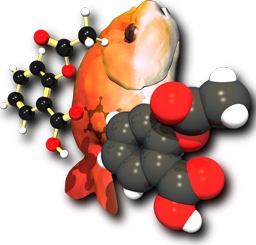
Open Babel is a chemical toolbox designed to speak the many languages of chemical data. It's an open, collaborative project allowing anyone to search, convert, analyze, or store data from molecular modeling, chemistry, solid-state materials, biochemistry, or related areas. Main features:
● Interconversion of many chemical file formats.
● Substructure search, based on SMILES
● Fingerprint calculation.
● 3D coordinate generation.
● Interconversion of many chemical file formats.
● Substructure search, based on SMILES
● Fingerprint calculation.
● 3D coordinate generation.
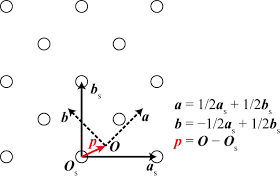
Spglib is a library for finding and handling crystal symmetries written in C. There are the python, fortran, rust, and ruby interfaces.
